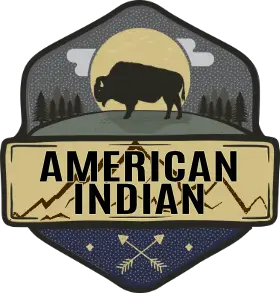The First Georgians: A History of Native Americans in the State of Georgia
Long before European settlers arrived on the shores of Georgia, various Native American tribes called this land home.
As far back as 12,000 BCE, during the Paleo era, nomadic hunter-gatherers traveled in small bands, setting up campsites along the rivers and streams that veined across the terrain.

Armed with crude stone tools, these earliest inhabitants of Georgia survived by foraging for plants, fishing, and hunting wild game.
Life remained much the same over thousands of years. During the Archaic period between 8,000-1,000 BCE, the natives grew more settled, developing seasonal migration patterns and trading networks.
Artistic expression flourished with the creation of pottery and rock art. The Woodland era from 1,000 BCE–800 CE brought even greater advancements, including the revolutionary adoption of agriculture.
Bows and arrows were introduced for hunting. Permanent villages and burial mounds appeared across the landscape.
By 800 CE, the Mississippian culture emerged as the largest and most complex Native American society yet. Skilled farmers and hunters, they constructed impressive earthwork mounds, including the grand Etowah Indian Mounds in what is now Bartow County, Georgia.
“For untold generations, the land that would become Georgia belonged to its original inhabitants alone. They became masters of the forests, rivers, and wildlife that sustained their proud cultures.”
Blood and Fire: Hernando de Soto’s Savage Entrance
In 1540, the Mississippian people of Georgia lay sleeping as voyagers from another world crept upon their shores under the cover of darkness. At the helm stood a rapacious Spanish conquistador named Hernando de Soto, a man drunk on visions of glory.
Come morning, he would awaken the Natives from their slumber in the most violent fashion imaginable. When the sun crested over the treetops, de Soto gave the signal.
His men unleashed a thunderous volley from their arquebuses that jolted the stunned villagers from their beds. Then the butchery began.
De Soto’s army of over 600 battled their way inland, leaving carnage in their wake. These interlopers wanted only gold and glory, but found mostly resistance from the embattled tribes.
Wherever de Soto tread, terror followed. His contingent rampaged through the Mississippians’ territory like locusts in a wheat field, pilfering food stores, destroying property, and slaughtering all who stood in their path. From sunup to sundown, the cries of war echoed through the hills.
But the conquistador’s most insidious weapons remained invisible. Latent within his ranks were European diseases against which the Natives had no immunity.
In the weeks after de Soto’s departure, as Mississippian villages were still reeling, smallpox erupted with a vengeance. Their communities were decimated, left to bury mounds of the dead. It was only the first wave of pestilence unleashed by contact with the outside world.
So began the tragic chapter of European colonization in Georgia. De Soto’s bloodstained entrance in 1540 plunged the Native tribes into the chaotic world that would become their undoing.
Hernando de Soto’s Violent Expedition

In 1540, Spanish conquistador Hernando de Soto led an expedition of over 600 men on a violent rampage through the American Southeast in search of gold, battling Native American tribes along the way.
His army became the first Europeans to enter Georgia, causing terror and bloodshed. Besides inflicting cruelty, they introduced devastating European diseases like smallpox.
De Soto’s expedition was a seminal event in the colonization of Georgia and defeat of Native tribes.
A Fragile Peace Shattered: The Guale Revolt Against Spain
In 1566, a fleet of Spanish ships appeared off the coast of Georgia, swaying like ghosts in the morning mist.
From their holds emerged not soldiers, but Franciscan friars in rough wool robes, clutching crucifixes. They came ashore on St. Catherines Island to a welcoming party of the Guale tribe.
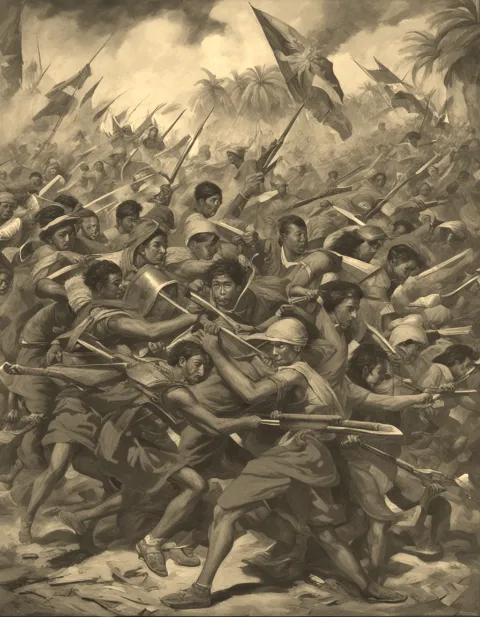
Thus began the missionary efforts to convert the Guale to Christianity. The friars toiled under the blistering sun, building the Santa Catalina de Guale mission with Indian labor.
Soon a modest chapel stood surrounded by wattle huts with sand floors. Catechism classes commenced, and willing Guale were baptized into the faith.
For a time, an uneasy peace prevailed. The Guale adjusted to the Spanish presence and adopted elements of their strange religion.
But the seeds of resentment had been planted. As the Franciscans’ demands increased, Guale patience wore thin. Indian discontent smoldered like a brushfire as abuses mounted.
The tinderbox finally ignited in 1597. That year the Guale launched a carefully planned revolt, burning churches and slaughtering the friars.
Spanish soldiers soon restored order at gunpoint, but the island mission lay in ashes. Santa Catalina was evacuated, marking the end of the church’s first foothold in Georgia.
Once again, the Spanish had wrongly assumed the Guale would embrace their ways without resistance. But a stronger bond united this tribe – their ancestral heritage and love of freedom.
For a fleeting moment in 1597, the Guale reclaimed their independence in a dramatic display that shocked the colonizers. They would not go gently into the good night.
An Uneasy Calm: Spanish Power Fades as British Encroach
In the uneasy years following the Guale revolt, Spanish influence dwindled along the Georgia coast. Their grand dreams of conquest in the New World withered in the subtropical heat. By the early 1600s, the once-mighty Spanish Empire was a shadow of its former self.
As Spain’s grip loosened, a new threat loomed on the horizon – the British. English settlers and traders began trickling onto the fringes of Spanish territory in the late 1600s, establishing farms and trading posts. Lured by abundant game and fertile soil, more colonists arrived to carve out new lives.
At first, the Native tribes welcomed the opportunity to trade deerskins and other goods for British firearms, metal tools, and whisky. But friendly relations soon soured as the aggressive newcomers pressed further inland. Indian lands became endangered by creeping British expansion, setting the stage for future conflicts.
Lines Drawn: The Yamasee War Explodes

By 1715, tensions between British traders and the Native tribes reached the breaking point. The Yamasee, a loose confederacy of bands displaced from Spanish Florida, bore the brunt of abuses. British traders raided Yamasee villages for slaves, sparking outrage.
On April 15, 1715, the Yamasee act. They launch a meticulously planned assault on the British, rampaging through trading posts and plantations.
Within days, over 100 British settlers are killed as outlying farms go up in flames. The battered survivors flee to the safety of walled cities.
Shockwaves reverberate throughout the Atlantic colonies. The Yamasee War has exploded. Friends quickly become foes as historic alliances unravel.
Several tribes join the Yamasee offensive, while the British desperately enlist the Cherokee as counterattack forces. A frenetic reshuffling of power loyalties consumes British-Indian relations.
For one fleeting moment, the possibility of driving the British into the sea seems real. But the uprising ultimately fails, as superior British firepower prevails. By 1717, the defeated Yamasee retreat south to Spanish Florida, their dream of independence shattered.
By the 1700s, European diseases had already killed up to 90% of Native Americans living on the Georgia coast. The mighty chiefdoms of old were fragmented and severely weakened. The stage was set for an era of forced relocations that would forever change the face of the region.
“Our people want only to live as our ancestors lived, unmolested in our homelands. But these British bring nothing but disease, slavery, and death!”
—Muskogee Creek leader Brims, protesting British encroachment
Paying the Price: The Yamasee War Reshapes Power
In the aftermath of the Yamasee War, a stunned British Empire sifted through the ashes of destroyed trading posts and realized how close they had come to being eliminated. Changes were clearly needed in their Indian relations.
To secure the frontier, the British increasingly turned to the Cherokee as military allies. Cherokee warriors were armed and sent to attack tribes hostile to British interests. This fateful partnership would have dire consequences, pitting the Cherokee against their own kin.
The defeated Yamasee and other tribes paid dearly for their failed uprising. Most were driven from their Georgia homelands completely, either perishing from disease and starvation or relocating to Spanish Florida as refugees. Yet their bold stand was not in vain, for the British tread more cautiously thereafter.
Mary Musgrove: Bridging Two Worlds
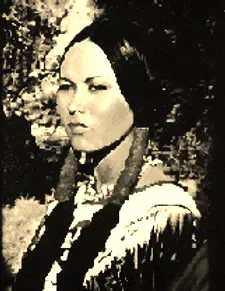
Mary Musgrove (c. 1700–1765) was a prominent biracial Creek woman who served as a cultural liaison between British colonists and the Muscogee Creek Confederacy.
Fluent in English and Muskogee, she facilitated the establishment of Georgia colony and helped foster peace through her skills as an interpreter and negotiator.
However, she later protested against British land encroachment.
Musgrove illustrates the complex middle ground some Native Americans occupied between European and Native societies.
Discord Sown: The Cherokee Become British Pawns
In the years after the Yamasee War, British officials masterfully played Cherokee factions against each other to maintain control. Cherokee leaders who showed loyalty were rewarded with medals, army commissions, and lavish gifts during visits to England.
By the 1740s, bitter political divisions fractured Cherokee towns. Rival leaders waged campaigns of assassination against each other, with the British often secretly orchestrating the killings. This discord left the Cherokee vulnerable to manipulation through “divide and conquer” tactics.
Territorial disputes also brewed between the Cherokee and Creek tribes due to British meddling. Both sides raided enemy towns, scalping men and kidnapping women and children.
Full-scale war was narrowly averted multiple times. Far from forging unity, British intervention brought the Cherokee nothing but internal chaos.
Ceding Ancestral Lands: The Creek Confederacy Pressured
As white settlements metastasized in the 1700s, Creek lands were increasingly targeted for acquisition. After Britain defeated France in the French & Indian War, they controlled all lands east of the Mississippi. This bellicose empire now fixed its sights on the Creek territory of western Georgia and eastern Alabama.
In 1773, Creek leader Emistisiguo ceded massive amounts of land in present-day Georgia and South Carolina under the Guist and Long Canes treaties. Further land sessions followed, as Creek leaders were coerced or bribed into relinquishing their homelands.
By the 1790s, white squatters flooded onto Creek lands with impunity. To defend their shrinking territory, the Creek bands united as a confederacy under the half-Scottish leader Alexander McGillivray.
He became the Creek Nation’s first principal chief, working to centralize authority and resist American expansion. But the Creek homeland continued shrinking acre by acre.
Chief James Vann
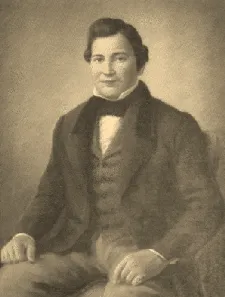
Cherokee leader James Vann (1765-1809) owned plantations, taverns, and ferries that made him one of the wealthiest Cherokee citizens in Georgia.
He built a lavish two-story brick mansion, now a state historic site, using African American slave labor.
Vann led Cherokee warriors allied with the U.S. against the Creek Red Sticks during the War of 1812.
His life epitomizes the social stratification and acculturation that emerged among the Cherokee elite.
Driven From Their Homeland: The Trail of Tears and Other Forced Removals
As British power grew, Native tribes found themselves under increasing pressure. In 1738, a devastating smallpox epidemic killed nearly half of the Cherokee population in Georgia.
Despite this trauma, the Cherokee sided with the British during the American Revolution, drawing retribution from American patriots.
In 1802, the U.S. government and the state of Georgia demanded that the Cherokee cede their ancestral lands in the state. The proud tribe stubbornly refused to abandon their homes.
Over the next few decades, the screw turned tighter against Native Americans in Georgia:
- 1828 – The Cherokee Phoenix, first Native American newspaper, begins publishing in Cherokee’s new capital of New Echota. It protests Indian Removal policies.
- 1830 – President Jackson signs Indian Removal Act, authorizing forced relocation west of the Mississippi.
- 1832 – In a victory for Cherokee sovereignty, the U.S. Supreme Court supports Cherokee rights in Worcester v. Georgia. Jackson defiantly ignores the ruling.
- 1838-39 – The U.S. Army marches over 16,000 Cherokee from Georgia to Indian Territory (Oklahoma) in the notorious “Trail of Tears.” Over 4,000 die along the route west.
The Creek suffered a similar fate. After being pressured into ceding lands through a series of unjust treaties, they were forcibly rounded up and marched west in 1836.
In one generation, Native tribes that had inhabited Georgia for millennia were uprooted from their homelands.
“I fought through the War Between the States and have seen many men shot, but the Cherokee Removal was the cruelest work I ever knew.”
—Georgia soldier who participated in the Trail of Tears
The Long Road to Recognition: Cherokee and Creek Persevere
The expelled tribes did not vanish, despite the U.S. government’s best efforts. In the 20th century, the Cherokee and Creek nations persisted in reclaiming their identity and rights.
In 1906, the United States government forcibly dissolved the Cherokee Nation government that the tribe had maintained in Indian Territory following removal. The Curtis Act of 1898 had previously dismantled tribal governments in preparation for Oklahoma statehood.
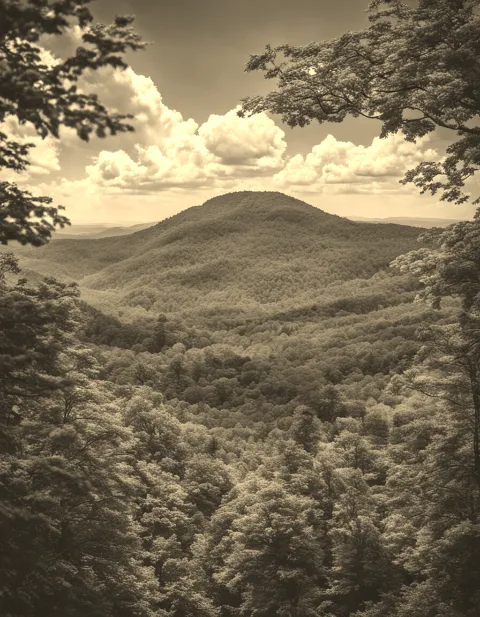
After disestablishing the government, the U.S. surveyed and sold off the last parcels of former Cherokee lands in northeastern Oklahoma without tribal consent. This enabled further white settlement and resource extraction.
A Cherokee community had remained in the Appalachian Mountains of western North Carolina following the Trail of Tears removal, eventually settling on the Qualla Boundary reservation. After decades of surviving as an unrecognized tribe, they were officially designated the Eastern Band of Cherokee Indians by the U.S. government in 1975.
Federal recognition meant the right to self-governance, along with access to beneficial programs and services. It marked a major victory in restoring Cherokee sovereignty in North Carolina.
The portion of Cherokee forced west to Oklahoma in the 1830s re-established themselves as the Cherokee Nation. This government persisted even through the dissolution of 1906.
After decades of remaining unrecognized, the tribe was finally reinstated with federal status in 1979. Like the Eastern Band, this milestone returned rights of self-government and tribal autonomy to the Oklahoma Cherokee that had been denied for so long.
The Muscogee (Creek) Nation in Oklahoma, like other removed tribes, lost federal recognition in the early 1900s through the Curtis Act before having their government formally reinstated in 1984.
Federal recognition was crucial for the Creek Nation to rebuild its institutions, provide services to citizens, and preserve its constitutional authority as an indigenous sovereign entity.
Cherokee families remained in remote regions of Georgia following removal, quietly practicing their culture. With state recognition in 1988, the descendants of Cherokee who evaded the Trail of Tears finally gained formal status as a tribe within Georgia.
While lacking the autonomy of federal recognition, state recognition represented an important step in once again being acknowledged as a tribal entity.
Against all odds, the Cherokee, Creek, and other tribes endure. Through unthinkable adversity, they preserved their rich heritage in Georgia. Though many were forced to abandon their beloved homelands over a century ago, their spirit lives on.
Lasting Legacies: Honoring Georgia’s Native Heritage
The Native American story in Georgia is one of both sorrow and resilience. Though past injustices can never be undone, today there is hope for healing through education, preservation, and celebration.
At Etowah Indian Mounds State Park, visitors now quietly roam where Mississippian chieftains once reigned supreme. The grassy temple mounds still stand tall as living monuments, with a museum to help interpret their grandeur.
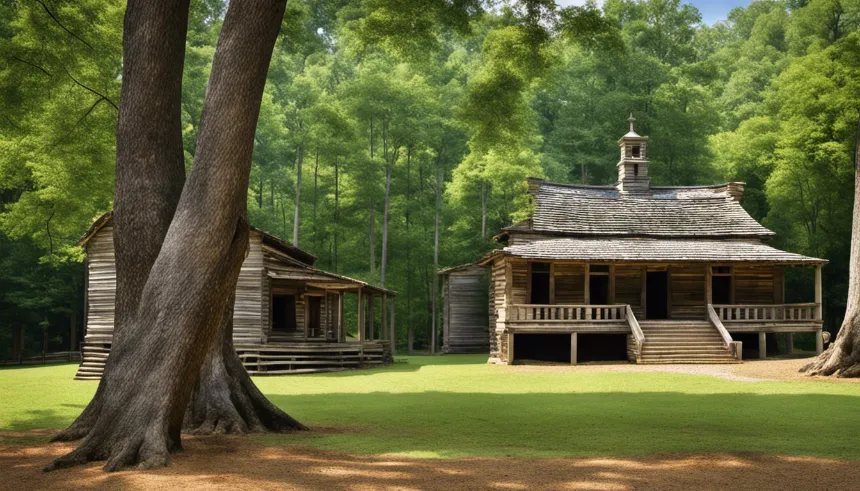
Where Cherokee leaders waged their doomed battle against removal, the abandoned capital of New Echota is now reverently protected as a National Historic Site. Along the hillsides, interpretive trails recount the Cherokee’s courageous but tragic stand.
At the University of Georgia, a groundbreaking Cherokee language course is working to revitalize this crucial thread of heritage for new generations. The voices of ancestors echo in every lesson spoken.
And the Georgia Tribe of Eastern Cherokee keeps their forebears’ memory close through events like the annual Cherokee National Holiday, where time-honored customs are woven into modern lives. Their dances, foods, and crafts all pay homage to those who walked this land first.
Though never forgotten, the legacy of Native peoples is now proudly proclaimed across Georgia, from grassy mounds to bustling classrooms. The journey continues, but their first steps shall never be erased.
The native peoples of Georgia deserve to have their stories told. Though much was lost, their legacy remains indelibly etched into the land they once called home.
